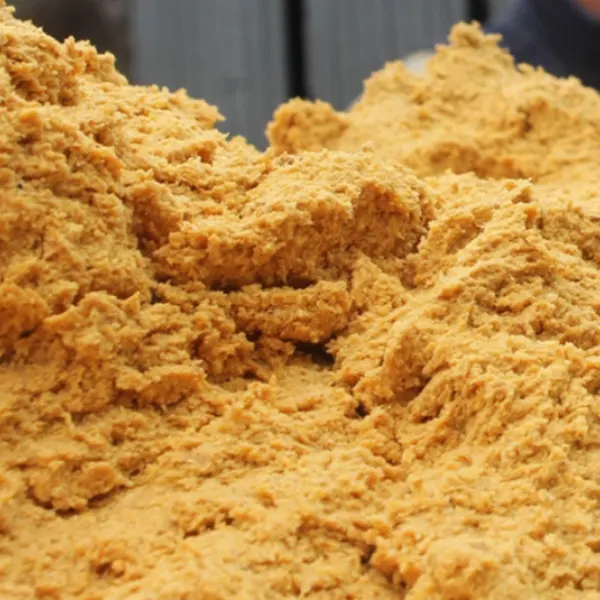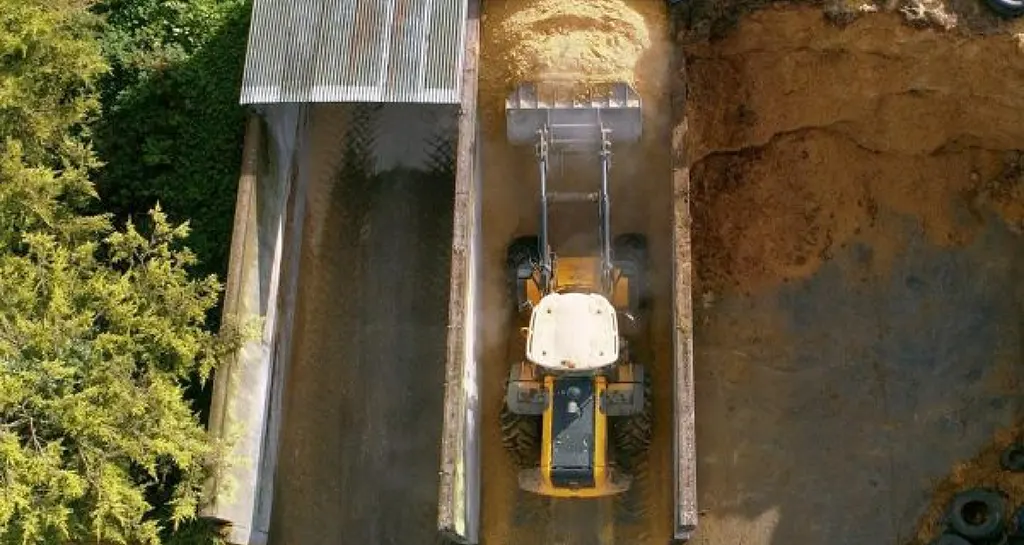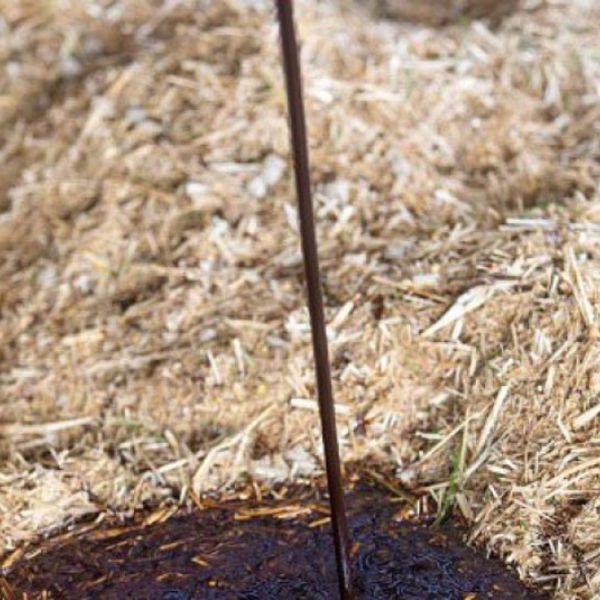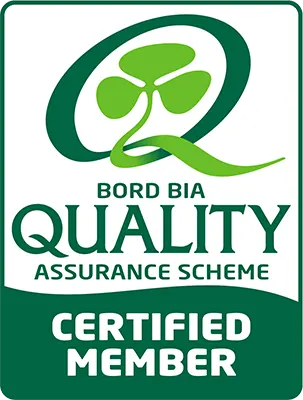Eornagold
EORNAGOLD is produced from pressed residual (spent) grains, evaporated syrup and a centrifuged cake residue from the whiskey distillation process. Initially, water is added to milled corn or barley and malt, and processed in the brew house to extract sugars for fermentation by yeast.
A highly versatile mixture with an excellent combination of high yields, quality and persistence.
Moist Feeds Handling & Storage Guide
Following the guidelines for handling and storage is hugely important to the successful feeding of moist feed for best animal performance. Specialist Nutrition is here to help you all the way.
The two key factors of storing moist feeds properly are to cover them quickly (within 24 hours) and correctly (airtight). Please carefully follow the step-by-step guide below. For expert advice from one of our technical team, call us today on +353 51 833071 or click to contact us.
Select the Right Storage Site
Moist feeds are delivered in bulk and tipped in loads of approximately 30 tonnes. The selected storage site should be clean with a firm level surface, preferably concrete as it makes handling and feeding out easier.
Moist feeds should ideally be stored in a three-walled pit as this structure is easier to manage. A long narrow three walled silo is best, as it allows the farmer to work across the feeding face quicker and therefore reduce the time the product is exposed to air.
Depending on the product, there may be a small amount of run off. Therefore, the selected storage site should not be located near drains or open water courses.
Ag-bags are an excellent alternative to store moist feeds.

Allow the Feed to Cool Down & Cover within 24 Hours
Moist feeds are delivered straight from the point of production and can be hot on arrival. It is best to let the load cool down for 6-12 hours before ensiling.
Do not leave moist feeds stand longer than 24hrs as the air gets in quickly, and the spoilage process starts. For multiple loads, get them into the pit in as short a timeframe as possible and, if necessary, cover the pit temporarily for the night and open the following day.
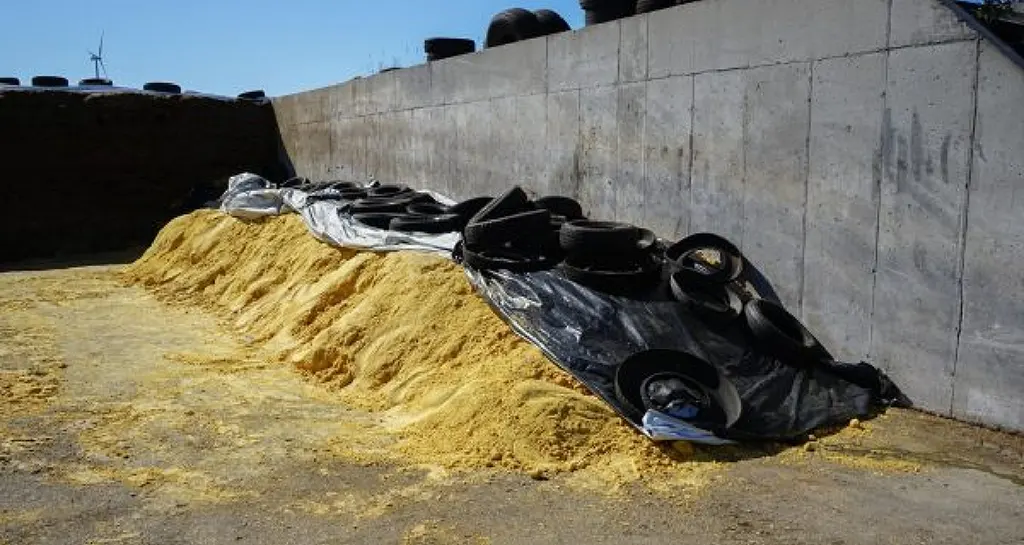
Ensure an Airtight Seal
To preserve the feed, correct compaction, covering and sealing is important. To exclude all air, use the loader bucket to compact and smooth the surface of the feed in the pit. It is NOT recommended to drive onto fresh, moist feed.
Once compaction is complete, seal the bunk with a silage cover such as Silostop or clean, high quality polythene sheets. Polythene sheets should be covered with mats, truck tires or sandbags to ensure close contact between the top layer of the feed and the pit cover. This will provide an even airtight seal throughout the entire pit. Lighter car tyres or pallets should be avoided as they may not provide a sufficient seal.
Mixing Moist Feeds
To give the pit added structure and allow the it to be piled higher while complimenting the feeds nutritional content, moist feeds can be ensiled with other products such as beet pulp, soy hulls, hay, and straw.
If mixing moist feeds with other products for storage, it is important to ensure the pitting mix does not exceed 65% dry matter content as it cannot be adequately compacted.
Feeding Out Moist Feeds
Once properly pitted, moist feeds can be fed immediately and included within the cattle or dairy cow diet. When feeding from the pit, it is important to keep the face as clean as possible.
Ideally, the exposed pit face should allow the farmer to work back 18 inches per day in the pit. If using a loading bucket, it is important not to push in at the bottom and lift; as this disturbs the face greatly and may cause an avalanche. Instead, the bucket should be used to cut down from the top, with the material then scooped away. Any loose material should then be pushed together to ensure that it is used next.
Moist feeds should be introduced to animals gradually over several days, building up the quantity to the desired feeding rate. Always consult your nutritionist or veterinarian.
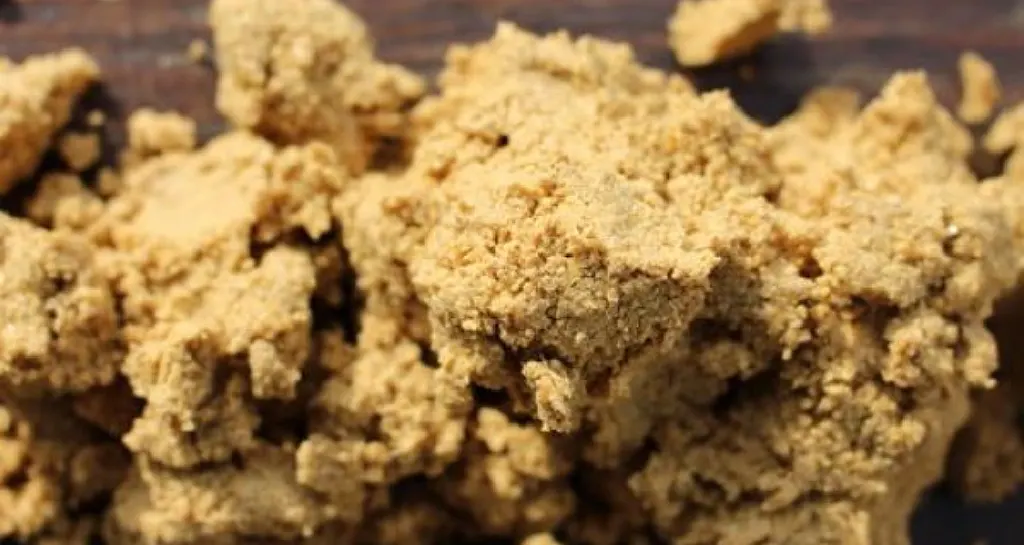
Environmental Compliance
In all activities, Specialist Nutrition adheres to the highest standard of health and safety procedures and environmental compliance. We recommend that all our customers regularly review farm practices to ensure they operate in a safe and compliant manner.
Always store feed products in a clean and dry environment.
Contact our team for any additional handling & storage advice on phone +353 51 833071 or by clicking below.
